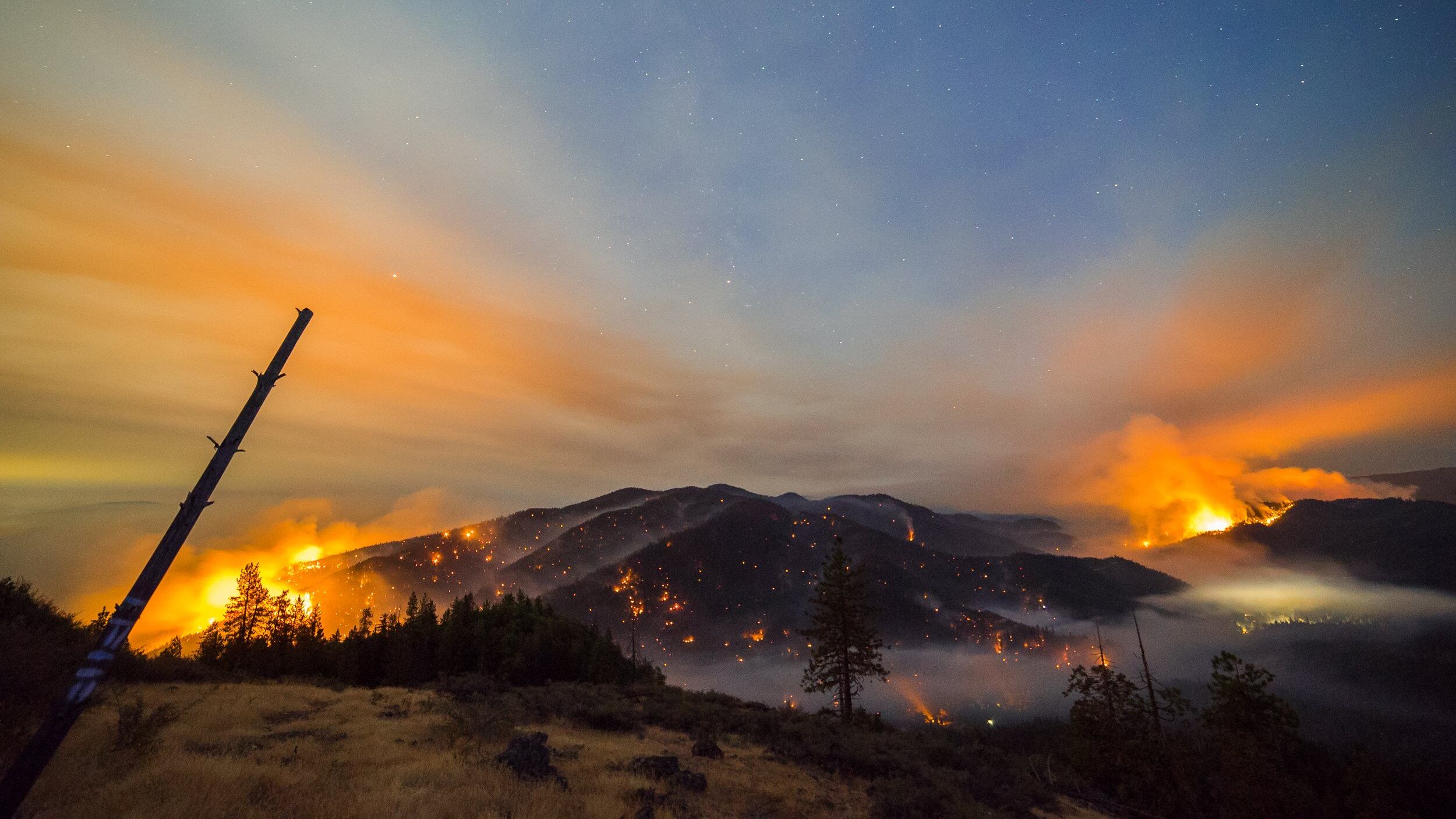Before his documentary Elemental: Reimagine Wildfire began touring Oregon this spring—from Hood River to La Grande to Astoria—there was one statistic director Trip Jennings wanted to add to the film:
“In California, 80% of homes that burn in wildfires are not surrounded by forests. Nationally, a majority of homes that burn in wildfires aren’t in forests.”
Why then, Elemental inquires, are hundreds of millions of dollars spent annually fighting fires in forests, with vegetation-thinning and suppression tactics that the scientists interviewed say won’t save threatened communities?
In response, Elemental explores fire’s natural ecology, how Indigenous burning practices could change the conversation and, most significantly, how the best defense against wildfire begins with homes themselves.
We caught up with Jennings to discuss neutralizing fire’s character, the science behind his film, and a serendipitous call he had with the documentary’s narrator, Oscar nominee David Oyelowo (Selma).
WW: Your film looks at the math problems, structural issues and unscientific assumptions that underlie “fighting” fire. How did that become the film’s concept?
Trip Jennings: I began to notice a gap between public understanding and policy around fire and the best available science. I started to pay attention after the 2017 Eagle Creek Fire. People really believed that fire was only bad and we needed to go in there and plant more trees. There’s this whole other story that actually Eagle Creek hadn’t burned in 80 to 100 years and, even though the fire was started by fireworks, it was due for its natural fire cycle.
Then, I talked to a scientist in the intervening time who said, look, anything that happens farther than 100 feet from the home almost has no bearing on whether that home survives. I thought to myself, that’s definitely wrong and I don’t believe you. And I spent five years on this filmmaking journey learning that he was right.
What are the difficulties of destigmatizing fire in a region where people are terrified of it?
If you just look at 2004 to 2018, the number of homes and structures destroyed by fire went up 1,000%. That’s a terrifying trend. So we took this approach of saying, OK, fire is going to happen. How do we live safely with it? How do we prepare ourselves before fire season? One of the best parts of showing the film has been hearing fire survivors say things like, “It’s hard to watch because it brought up my terrifying experiences, but it gave me hope because I thought there was nothing we could do.” That’s empowering.
Making homes more fire resistant—how does that happen? Individually? Governmentally?
Some amount of carrot and some amount of stick. There’s a pilot program in California that the Insurance Institute for Business & Home Safety lab came out with: this third-party designation called the “wildfire-prepared home.” California insurance companies have been directed to give policy owners discounts if they do all the things.
On the other hand, I think we have to see subsidies. I don’t want to live in a world where only the people who can afford it don’t burn up.
Why was it important for your film to contextualize the Yurok people’s relationship to fire in historical and ecological ways?
What we learn from [the Yurok’s Cultural Fire Management Council] is that fire just is; characterization of fire as good or bad is kind of irrelevant. That’s the ecology of almost every terrestrial ecosystem, and we need to live in that reality.
How did David Oyelowo become your narrator?
He lives in a neighborhood of L.A. called Tarzana, which basically backs up to wildlands. When there’s a fire, he sees it. When we first reached out to him, he was having some renovations done on his house and had contractors there. He saw the film and was like, “So what should I do to my house?” And he was taking notes. He was the perfect person.
What impact do you hope Elemental can have?
I hope this film will arm people with the best possible science to make communities safe, so we can begin to solve the housing affordability crisis and not lose houses to fires and know how to build better. We’re spending so much money, especially around Portland, to thin forests. I want that money to be spent keeping people safe.
SEE IT: Elemental tours Oregon during April and May. See a full list of screenings at elementalfilm.com/showtimes. The next Portland screening is at the Hollywood Theatre, 4122 NE Sandy Blvd., 503-493-1128, hollywoodtheatre.org. 6 pm Friday, May 1-Thursday, June 2. $7-$10.

